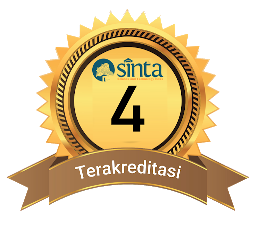Identification of Student Misconceptions Using A Three-Tier Test on The Concept of Atoms, Ions, and Molecules
DOI:
10.29303/cep.v7i1.6133Published:
2024-05-31Issue:
Vol. 7 No. 1 (2024): Edisi Mei 2024Keywords:
misconceptions, three-tier test, atomic, ion, molecular conceptsArticles
Downloads
How to Cite
Abstract
This research aims to identify misconceptions of the grade ninth students at MTs Al-Ishlahuddiny Putra Kediri Lombok using a three-tier test on the concept of atoms, ions, and molecules. This type of research is descriptive qualitative. The population in this study was class IX students at MTs Al-Ishlahuddiny Putra Kediri, consisting of 216 students. Sampling was carried out using a random sampling technique using the Slovin formula, and a sample of 68 students was obtained. The instrument used in this research is the three-tier test instrument by Riana Dewi Astari and has been validated using product moment correlation. The research results showed that the average percentage of students who experienced misconceptions was 23%, classified as low. Most students need clarification regarding the connection between the concept of compound molecules and elements and the concept of ions that release and receive electrons. Factors that cause misconceptions among students are the gap between preconceptions and concept assimilation, the objects being studied being abstract or difficult for students to understand, and the incompleteness of the information students receive during learning.
References
Anggraeni, V., Enawaty, E. & Rasmawan R. (2018). Description of Student Misconceptions In Atoms, Molecules, and Ions at SMP Negeri 21 Pontianak. Journal Education and Learning Equator. 7(1). 1-2
Ardiansyah. (2016). Concept Identification Alternatives to Chemistry Teachers, a Study Literature. National Seminar Science Education (pp. 49-54). Surakarta: Sebelas Maret University.
Astari, RD (2012). Instrument Development Three Tier Test as an Instrument in Identifying Concept Misconceptions Atoms, Ions, and Molecules. (Thesis, Sunan Kalijaga State Islamic University Yogyakarta).
Bodner, G. M. (1986). Constructivism: a Theory of Knowledge. Journal of Chemistry Education. 3 (63). 873-878.
BSNP. (2006). Competency Standards and Basic Competency in Chemistry for SMP/MTs 2006. Jakarta: Department of Education and Culture.
Chaniarosi, L, F. (2014). Identification Misconceptions of High School Biology Class Teachers XI IPA on Reproductive System Concepts Man. Journal of Educational Biology Tropical. 2(2). 187-250.
Daud, SAS, Laliyo LAR & Tangio JS (2014). Identify Concept Understanding Changing the State of a Substance with Using Three Level Instruments (Three- tier test)for Class VII Students Limboto Model State MTs. Journal Study. 3(2). 1-14.
Gabel, L.D. (1993). Hand Book of Research on Science Teaching and Learning a Project of National Science Teaching Association. New York: Macmillan Publishing Company.
Hairy, MR, Kusmiyati & M. Yamin. (2018). Analysis of Mastery of Material Concepts Reproductive System in High School Students Country in Mataram City. Incandescent Journal MIPA. 13(2). 119-123.
Hamdil, & Mukhlisin. 2011. Student Misconceptions Class X Al Madani Vocational School Pontianak On Atoms, Ions and Molecules Matter. Pontianak: Tanjungpura University.
Jonassen, D. H., Carr, C., & Hsiu-Ping, Y. (1998). Computers as mindtools for engaging learners in critical thinking. Tech Trends-Washington DC, 43, 24-32.
Jufri, A. W. (2017). Learning and Learning Science: Basic Capital to Become a Teacher Professional.Bandung: Reka Library Create.
Kemendikbud. (2016). Minister of Education and Culture Regulation Number 22, 2016 concerning Content Standards For Primary and Secondary Education.
Kusumawati, I., Enawaty, E., & Lestari, I. (2014). Misconceptions of Class XII Students SENIOR HIGH SCHOOL Negeri 1 Sambas on Reaction Materials Oxidation Reduction. Journal Education and Learning. 3(6).
Osborne, R., & Freyberg, P. (1985). Learning In Science: The Implications of Children's Science. Auckland: Heinemann.
Pesman, H. (2010). Development of a Three Tier Test to Assess Misconceptions About Simple Electric Circuits.The Journal of Educational Research.
Sudaryono, MG & Rahayu W. (2013). Research Instrument Development Education. Yogyakarta: Graha Ilmu.
Sukardi. (2007). Research methodology Education. Jakarta: PT Bumi Aksara. Page: 157.
Suparno, P. (2005). Misconceptions and Change Physics Education Concept. Jakarta: Grasindo.
Suryawati, E., & Osman, K. (2017). Contextual learning: Innovative approach towards the development of students’ scientific attitude and natural science performance. Eurasia Journal of mathematics, science and technology education, 14(1), 61-76.
Suwarto. (2013). Diagnostic Test Development in Guided Learning Practical for Educators and Prospective Educators. Yogyakarta: Learning Library.
Tresnasih, N., I. Farida, & R. Pitasari. (2013). Analysis of Students' Conception of Electrolysis Material Using Three Tier Multiple Test Instrument Choice. Symposium Proceedings National Innovation and Learning Science. 4(2). 978- 602.
Wisudawati, AW (2015). Development Three Tier Test Instrument for Identifying Level Representation Microscopic Changes in Water Forms as an alternative integration assessment Islam-Science (A Preliminary Study). National Seminar on Chemistry and Education Chemistry VII. 7(1). 978-602.
Author Biographies
Rieke Oktavia Fanfiana, Universitas Mataram
Saprizal Hadisaputra, Universitas Mataram
Supriadi, Universitas Mataram
License
Copyright (c) 2024 Rieke Oktavia Fanfiana, Saprizal Hadisaputra, Supriadi

This work is licensed under a Creative Commons Attribution-ShareAlike 4.0 International License.
Authors who publish with Chemistry Education Practice agree to the following terms:
- Authors retain copyright and grant the journal right of first publication with the work simultaneously licensed under a Creative Commons Attribution License 4.0 International License (CC-BY-SA License). This license allows authors to use all articles, data sets, graphics, and appendices in data mining applications, search engines, web sites, blogs, and other platforms by providing an appropriate reference. The journal allows the author(s) to hold the copyright without restrictions and will retain publishing rights without restrictions.
- Authors are able to enter into separate, additional contractual arrangements for the non-exclusive distribution of the journal's published version of the work (e.g., post it to an institutional repository or publish it in a book), with an acknowledgement of its initial publication in Chemistry Education Practice.
- Authors are permitted and encouraged to post their work online (e.g., in institutional repositories or on their website) prior to and during the submission process, as it can lead to productive exchanges, as well as earlier and greater citation of published work (See The Effect of Open Access).






